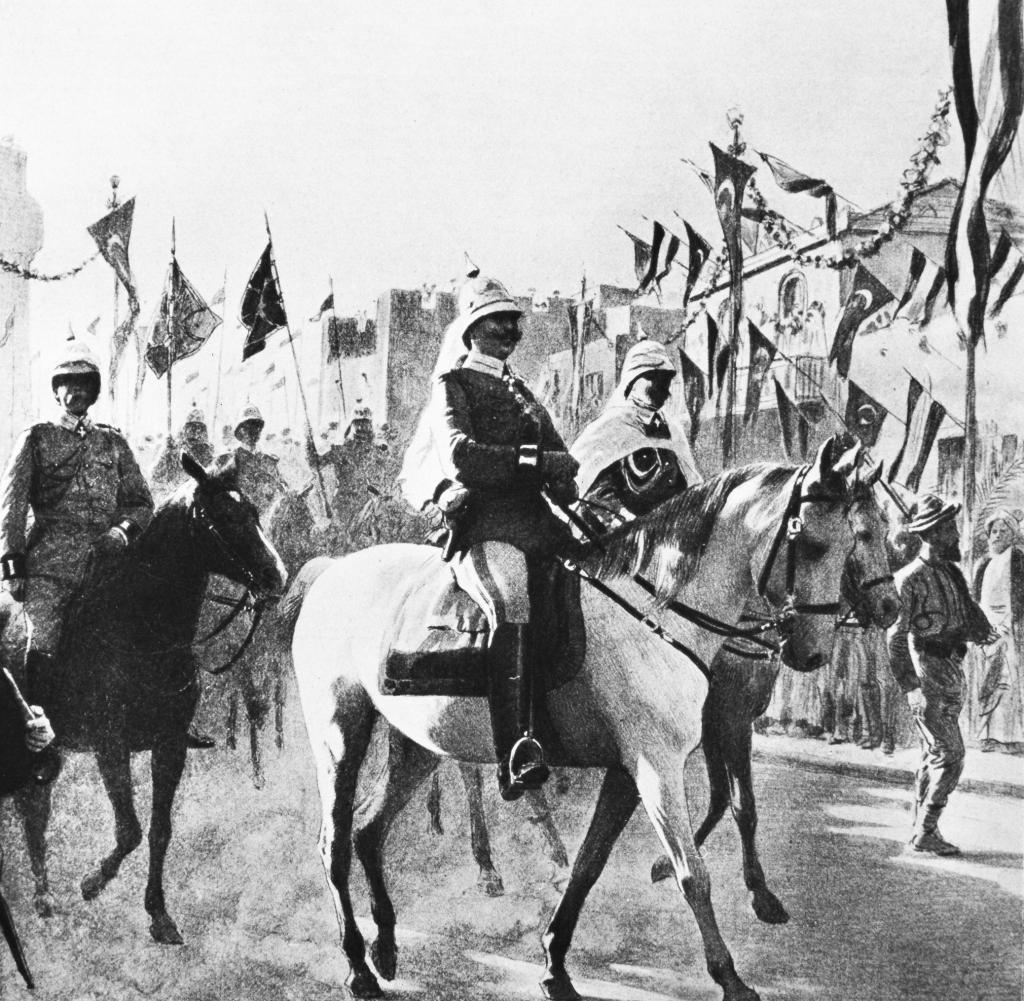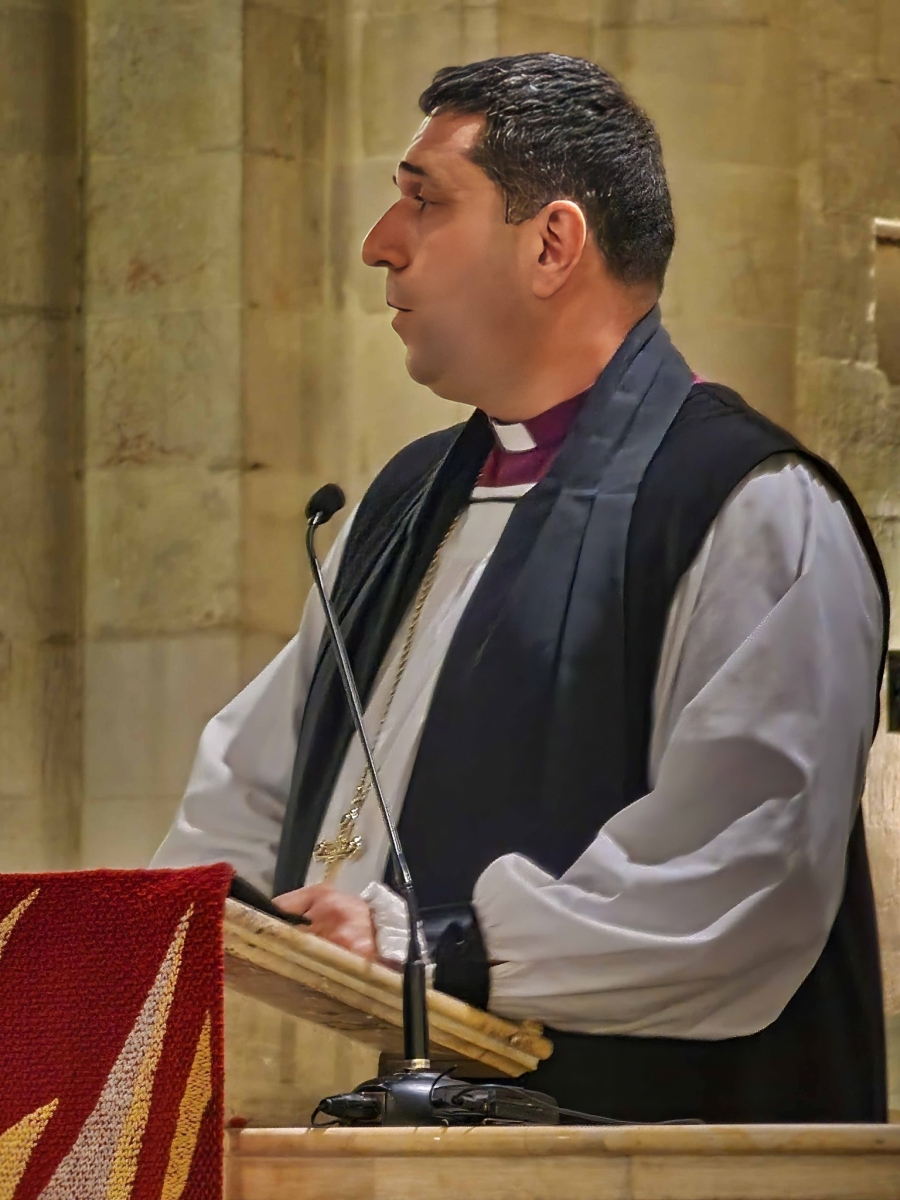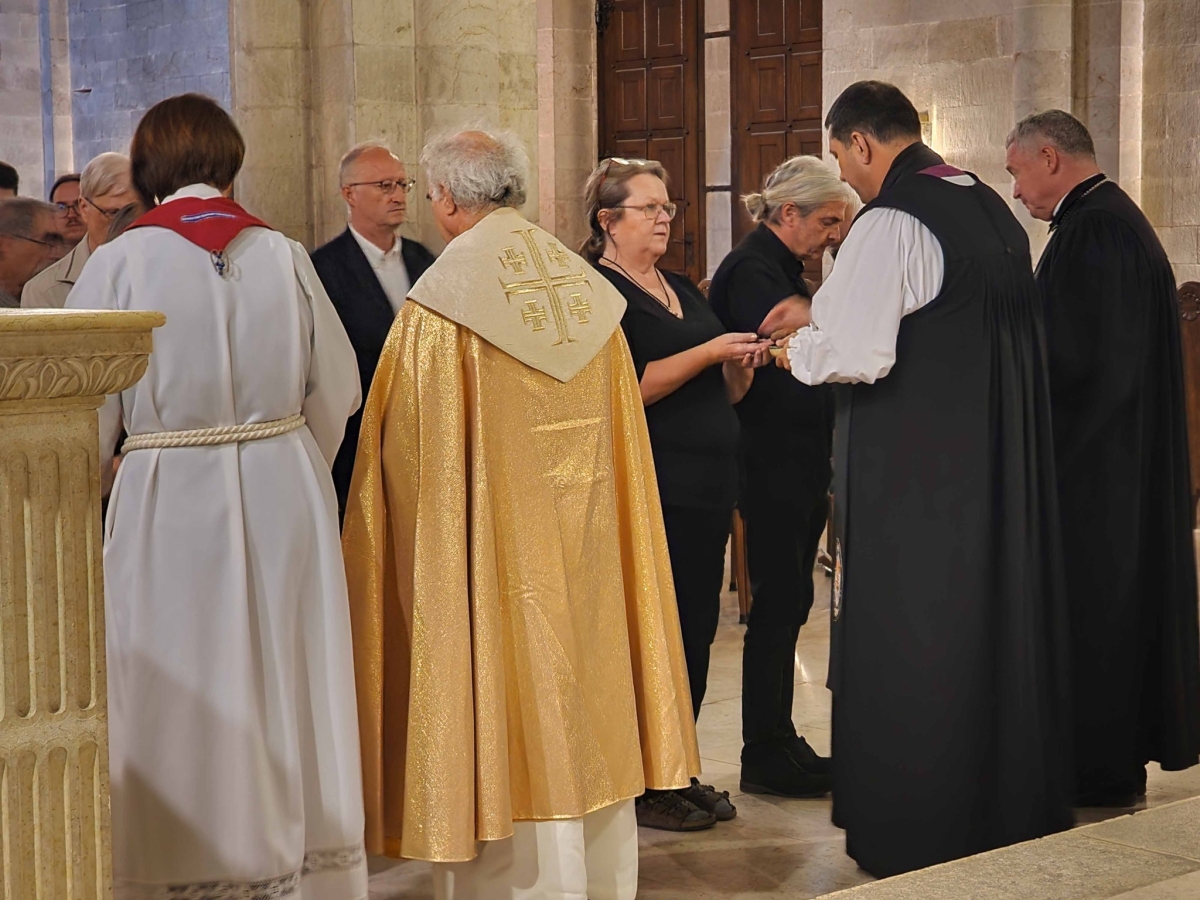On his recent visit to Jerusalem, Archbishop Justin Welby described as a “wonderful witness” the fact that the heads of Churches in Jerusalem were able to come together to show joint resolve at a press conference following the explosion at the al Ahli Arab Hospital in Gaza.
As if to emphasise that shared concern in difficult times, Archbishop Hosam was the guest preacher at the 125th anniversary of the inauguration of the Lutheran Erloserkirche (Redeemer Church), yesterday (October 31st), a day remembered in the Lutheran Church (among others) as Reformation Day, remembering the occasion when Martin Luther is believed to have published his 95 Theses in 1517. The event had been planned for some time but had added poignancy in the current circumstances.

In fact, the original Inauguration was a very grand affair. Kaiser Wilhelm headed a procession to the church, riding on a white horse, on October 31st 1898, with an entourage of 200. A giant hole was even cut in the city wall next to the Jaffa Gate to give access to them all. In his sermon the Archbishop said that it was the grandest royal entry to the city since Palm Sunday! The event in 1898 took place just two weeks after the consecration of St George’s cathedral. Since 1841 the two Churches had been working together. The initial Bishopric had been a joint Anglican Lutheran venture. From 1898 they developed separate patterns of ministry but maintained relations that currently have rarely been better.
Archbishop Hosam emphasised this relationship in thanking the senior clergy for their support. He said “we must continue to work and pray for those who are suffering in the midst of bombardments and rocket fire, even as we also strive to promote justice and peace throughout this land.” The main message of his sermon was based on the key words of ‘Reformation’ and ‘Redeemer’, referencing the occasion and the location.

He said that Reformation reminded us that the Church should always remain humble and must never think that reformation was a one time event. “For us, it remains an ongoing challenge.” He identified the Five Marks of Mission as the Anglican Church’s response to this challenge. He paid particular attention to the fourth mark which calls Anglicans to transform the unjust structures of this world. Referring to 2 Corinthians chapter 5, he said we should remember that we are Ambassadors for Christ, and that we have a ministry of reconciliation. He said, “at the moment, this seems impossible, yet someday the war will end. By our prayers and advocacy we hope this will happen sooner than later. Inshallah.” Hopeless as it sometimes seems,
through Christ, it remains the Church’s call to work out that redemption in this still fallen and broken world.
Archbishop Hosam

A tragi-comic footnote to the beginnings of the joint ministry in Jerusalem is provided by an account of the journey of the first bishop (joint Anglican-Lutheran) in 1841. His name was Michael Solomon Alexander. He had German connections but he had been nominated by the Church of England (aka UK government) for the position. So the British were sending him out to Palestine in a navy ship. It had all been arranged - but then someone felt uncomfortable about the name of the ship in which the new bishop was going to travel. The ship was called 'Infernal' and it was felt that was an inappropriate name for a ship which a bishop would arrive in. So, at the last moment a substitute ship was found to transport him - with what was considered a more suitable name. And the name of this substitute ship - with the more appropriate name? 'Devastation'.
Unfortunately ‘infernal’ and ‘devastation’ are two words only too appropriate for much of what has happened in Jerusalem since. This event perhaps added ‘hope’ and ‘prayer’ to that lexicon.
Posted 01/11/2023
